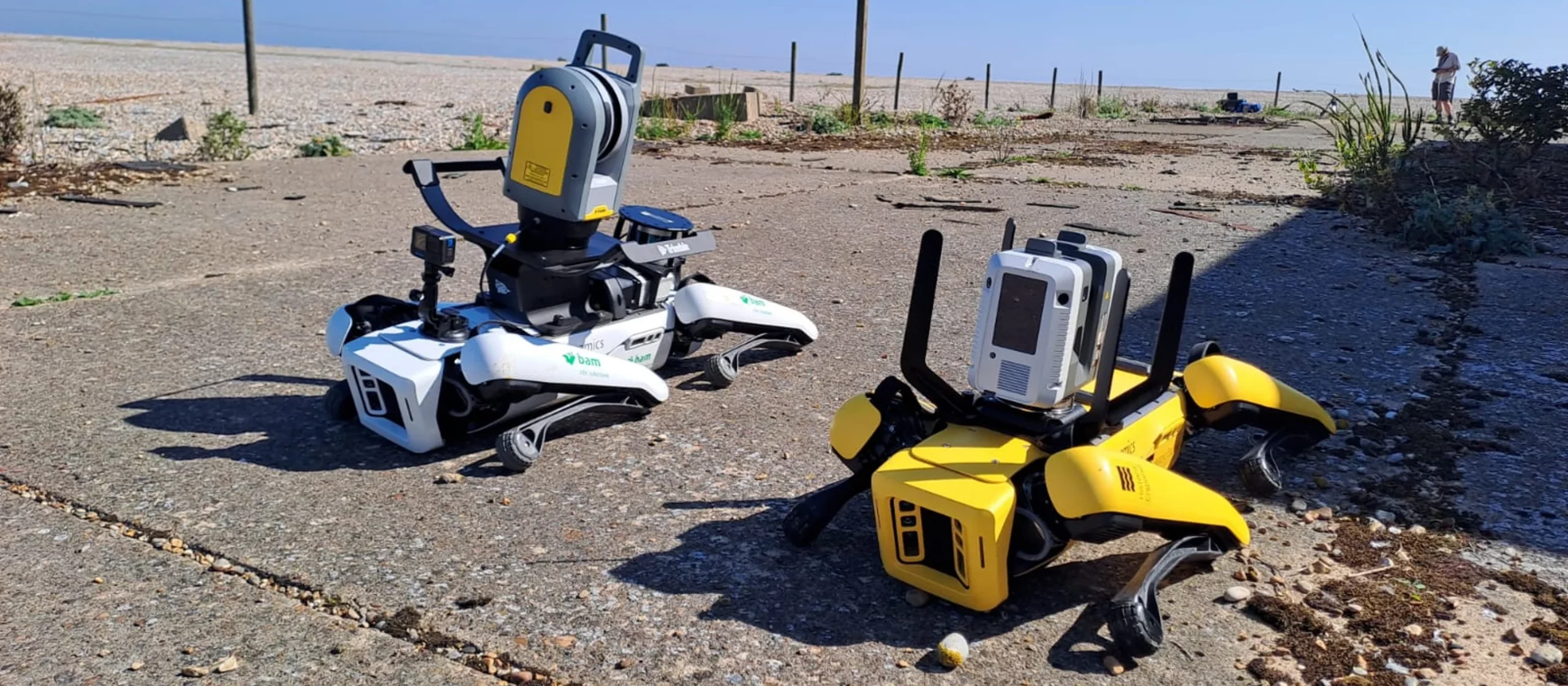
The National Trust recently used a robotic dog to sweep two labs that were used as a part of the U.K.’s atomic weapons program during the Cold War in a first for the independent conservation charity. It has previously been used to search the ancient site of Pompeii, and even had a go at painting with artist Agnieszka Pilat.
The two laboratories—known as Lab 4 and Lab 5—are located in Orford Ness, a former military site now located in a nature reserve after the National Trust acquired the site from the British Defense Ministry in 1993, according to a news release.
No nuclear material was ever used at the site but a test failure during the operations of the program “could still have resulted in a catastrophic explosion,” according to the National Trust. The buildings ultimately fell into disrepair and nobody has been able to go inside for several years. No significant surveys had previously been conducted.
Angus Wainwright, an archaeologist with National Trust, said Historic England has been conducting studies into the buildings. These have led researchers to ascertain the site’s significance, on a national and international scale.
“These are some of the few Cold War buildings that are on this monumental scale and visitable by the public,” Wainwright said. “The buildings used to be quite safe so we could go in and out as much as we liked, but now they are getting more risky as the concrete decays.”
Wainright expressed excitement about the team conducting the “experimental” survey using Spot, a robot designed by the firm Boston Dynamics, which resembles a canine companion. It can be controlled remotely and has a camera mounted to the top and four hinged legs.
Colin Evison, innovation technical lead at BAM, said utilizing Spot “is an ideal method” to deploy surveying equipment in and around the decaying structures in an environmentally sensitive location.
“In the last few years, the pagodas have also become part of the National Trust’s ‘curated decay’ policy and have been left to nature, including the effects of Orford Ness’ exposed coastal location,” the National Trust said.
The pagodas are no longer accessible to staff or visitors due to safety reasons. Photo courtesy of John Millar/National Trust Images
Wainwright said the team hopes to see if it’s possible to do a detailed building survey with no human operator inside.
The pagodas are deemed scheduled monuments, the same classification given to Stonehenge and the Royal Burial Ground at Sutton Hoo, which is also owned by National Trust.
“This is a really exciting opportunity for us to see inside Labs 4 and 5,” Glen Pearce, operations manager at Orford Ness, said in a statement. “The buildings have always had a certain mystery about them.”
The team hopes that the survey can inform decisions on how to enhance the way visitors to Orford Ness can interact with the space.
“This is the first time the National Trust has employed this kind of technology and it’s a key part of our commitment to ongoing research at our places,” Pearce said.
“It could change the way we and our visitors engage with the structures at Orford Ness as well as other scheduled monuments and buildings deemed unsafe to enter.”
More Trending Stories: